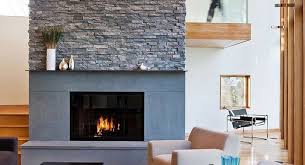Stone cladding is a popular choice for both interior and exterior applications due to its durability and aesthetic appeal. However, when considering its use in areas exposed to high temperatures, such as fireplaces or sun-exposed facades, it’s essential to understand its heat resistance properties. This article delves into the thermal characteristics of various stone cladding materials, providing insights to help you make informed decisions for your projects.The Sprucestone-wall-cladding.com
Understanding Heat Resistance in Stone Cladding
Heat resistance refers to a material’s ability to withstand high temperatures without degrading or losing structural integrity. In the context of stone cladding, this property is crucial for applications like fireplace surrounds, kitchen backsplashes, or building exteriors in hot climates.
Thermal Properties of Common Stone Cladding Materials
Different stones have varying thermal conductivities, which affect their heat resistance. The table below summarizes the thermal conductivity (k-value) and thermal resistance (R-value) of common natural stones used in cladding:Natural Stone Institute
| Stone Type | Thermal Conductivity (W/m·K) | Thermal Resistance (R-value) |
| Granite | 1.73 – 3.98 | 0.038 – 0.083 |
| Limestone | 1.26 – 2.15 | 0.067 – 0.114 |
| Marble | 2.07 – 2.94 | 0.049 – 0.070 |
| Sandstone | 1.83 – 2.90 | 0.050 – 0.079 |
| Quartzite | 5.38 | 0.027 |
Source: Natural Stone InstituteDURAMICA.COM+12Natural Stone Institute+12Dino Decking+12
Lower thermal conductivity indicates better insulation properties, meaning the material is less likely to transfer heat. Therefore, stones like limestone and sandstone offer better insulation compared to quartzite.jkstones.in
Fire Resistance of Stone Cladding
Natural stone is inherently non-combustible, making it a safe choice for fire-prone areas. However, the performance can vary based on the stone type and installation method.Wikipedia+9Dino Decking+9StonePly+9
Common Stone Cladding Systems
- Traditional Thick Stone Panels: These are heavy and can pose safety hazards if they crack or shatter under extreme heat, potentially leading to falling debris.StonePly
- StonePly Panels: These are thin stone veneers bonded to aluminum honeycomb panels, offering enhanced fire resistance and reduced weight. They have an ASTM E-84 Flame Spread Index of 0 and a smoke contribution of 5, classifying them as Class A per NFPA standards. StonePly+1DURAMICA.COM+1
Applications of Heat-Resistant Stone Cladding
Fireplaces
Stone cladding is ideal for fireplace surrounds due to its heat resistance. Materials like granite and quartzite are commonly used, but it’s essential to ensure proper installation to prevent cracking. The Spruce
Exterior Facades
In hot climates, stone cladding helps in maintaining cooler indoor temperatures by reflecting sunlight and resisting heat absorption. Natural stones remain cool to the touch even under direct sunlight, unlike metal claddings. stone-wall-cladding.com
Kitchens
For kitchen backsplashes and countertops, stones like lava stone offer excellent heat resistance and durability. Lava stone countertops are non-porous and can withstand temperature fluctuations, making them suitable for both indoor and outdoor use. Better Homes & Gardens
Advantages of Using Heat-Resistant Stone Cladding
- Durability: Resistant to weathering and thermal stress.Natural Stone Institute+6RTF | Rethinking The Future+6Better Homes & Gardens+6
- Safety: Non-combustible nature reduces fire hazards.Natural Stone Institute+4Dino Decking+4stone-wall-cladding.com+4
- Energy Efficiency: Provides insulation, reducing heating and cooling costs.
- Aesthetic Appeal: Offers a timeless and elegant look.stone-wall-cladding.com+4RTF | Rethinking The Future+4Fernhill Stone+4
Considerations When Choosing Stone Cladding
- Weight: Natural stone is heavy and may require additional structural support.Fernhill Stone+14stone-wall-cladding.com+14All House Related Solutions+14
- Cost: High-quality stone and installation can be expensive.
- Maintenance: Some stones may require sealing to prevent moisture penetration.The Spruce
- Installation: Proper installation is crucial to prevent issues like cracking under thermal stress.
Conclusion
Stone cladding is indeed heat resistant, making it a suitable choice for various applications exposed to high temperatures. By understanding the thermal properties of different stones and ensuring proper installation, you can enhance the safety, efficiency, and aesthetics of your space.


Leave a Reply